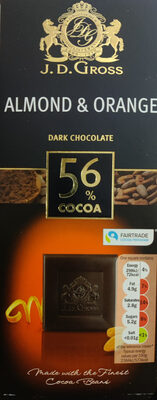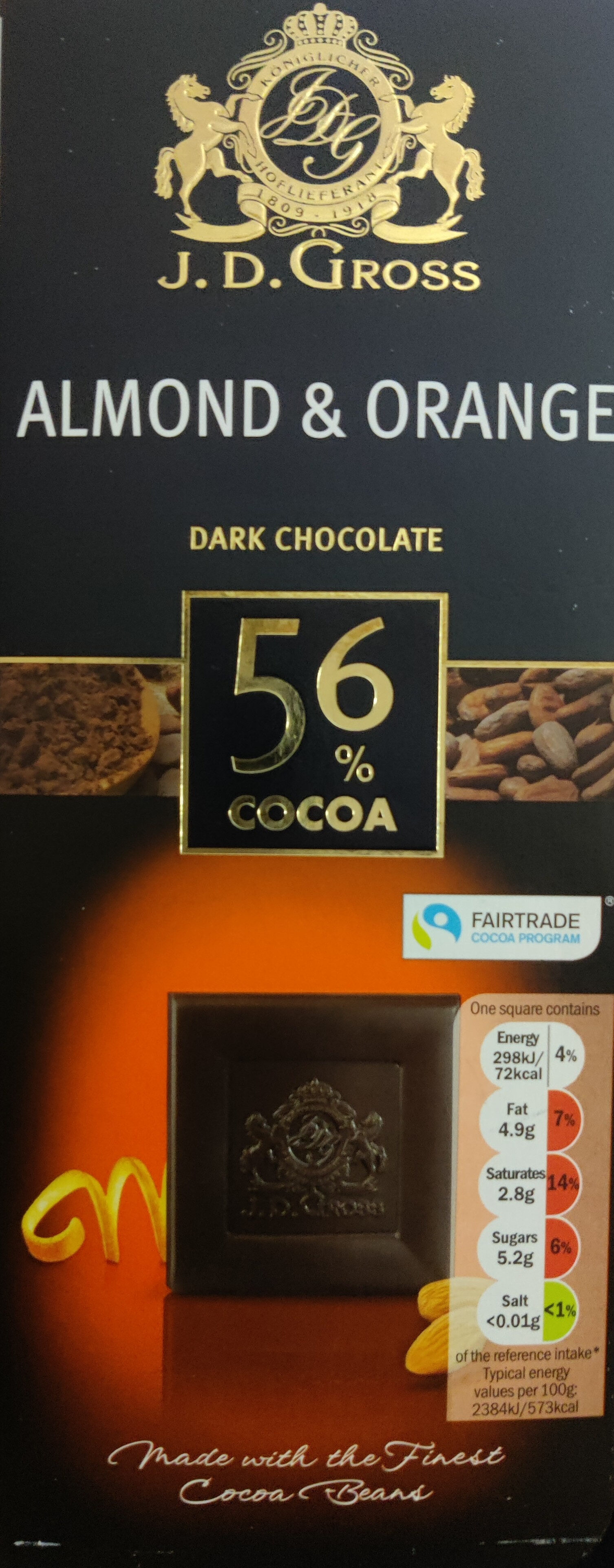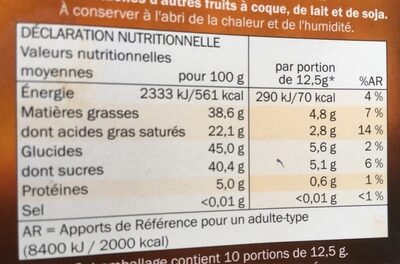Chocolat Noir Amande et Écorces d'Orange - J.D. GROSS - 125g
Ambiguous barcode: This product has a Restricted Circulation Number barcode for products within a company. This means that different producers and stores can use the same barcode for different products.
×
This product page is not complete. You can help to complete it by editing it and adding more data from the photos we have, or by taking more photos using the app for Android or iPhone/iPad. Thank you!
×
Barcode: 20936600
Quantity: 125g
Brandaí: J.D. GROSS
Catagóirí: en:Snacks, en:Sweet snacks, en:Cocoa and its products, en:Chocolates, en:Dark chocolates, en:Chocolates with almonds, en:Dark chocolates with almonds, en:Dark chocolates with orange
Labels, certifications, awards:
Fair trade, Fairtrade International, en:FSC, en:FSC Mix

Traceability code: FSC-C021442
Siopaí: Lidl
Country: An Fhrainc, An Ísiltír, An Ríocht Aontaithe
Matching with your preferences
Environment
Carbon footprint
Packaging
Transportation
Labels
Report a problem
Data sources
Product added on ag kiliweb
Last edit of product page on ag foodless.
Product page also edited by cquest, ecoscore-impact-estimator, foodvisor, frazerclews, hungergames, inf, mismer, moon-rabbit, musarana, oliviers, openfoodfacts-contributors, planteuser, quechoisir, roboto-app, serge31100, teolemon, thepainofeating, youplaboum, yuka.R3BrclBZMGVtUGxhbXNNOTRUelgwSTFjNnJyM1hEeTJFc0VESWc9PQ, yuka.U3I4N01KVWFwS1F1bk1ReThqM1g2LzVjblllTWUwMjROT1VTSWc9PQ, yuka.VGJ3RkdhWUFwdGhXeFBFaHppMk0xdmRQN0tLWUIzam5CdG9TSVE9PQ, yuka.sY2b0xO6T85zoF3NwEKvlmt9a_uOkx3vMxDloBeL2MXUP7j5ccNLyZj2EKs.











